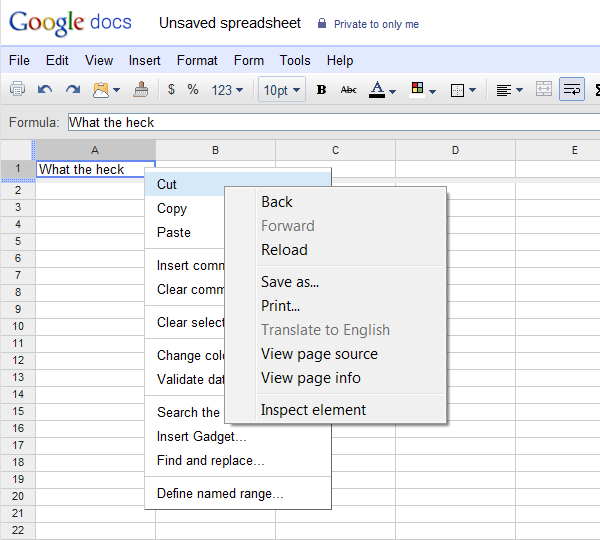Custom context menus always forget to support right-clicking *on* the context menu
Most users I see these days know they can use the right mouse button (or, if you’re being picky, the secondary mouse button) to produce a context menu. Essentially all creators of operating systems and UI frameworks (for platforms with mice) allow for this behavior. An interesting question is what happens when the user, having produced a context menu, right-clicks again on the context menu itself.
This isn’t odd at all to see in practice. For one thing, there are plenty of “right-click people” who habitually right-click on anything. And even for users who understand the difference between a left and right click, it’s fairly natural to inadvertently use the right mouse button twice in close succession to first invoke a context menu and then, in the next second, to select a command from that menu.
Microsoft Windows and Apple OS/X both handle this gracefully: right-clicking on a context menu command has the same effect as left-clicking the command. This behavior lets people who aren’t playing very close attention to which mouse button they’re clicking to still get what they want. The user can click with the right-mouse button to get the menu, and then immediately right-click again to select a command. (I’ve personally found this behavior worth exploiting; it feels faster to select context menu commands more quickly with two right clicks than a right and then a left click.)
This right-click-on-a-menu behavior is an example of a behavior that distinguishes long-time UI platforms from application UI creators that think they know better than the platform—or haven’t studied the platform closely enough. Virtually every application with custom context menus I’ve found fails to implement this behavior.
Case in point: Microsoft Office 2010, which should know better. I could have sworn they had this right at some point, but this knowledge was probably lost during the creation of their 19th proprietary UI framework. And if Office got this wrong, it's no surprise that most other apps with custom context menus get this wrong too. Generally, right-clicking on a context menu in such an application has no effect, which isn’t what the user wanted, but at least no harm is done.
It’s worse in the case of web application that override the browser’s context menu to provide their own context menu. The user gets seriously confused when the browser’s context menu comes up on top of the custom context menu:

Now, there's a small chance that the browser's context menu is left active by design; i.e., that a standard context menu on a custom context menu actually provides some value. Say, the custom context menu provides a plain hyperlink, and the user wants to be able to right-click on the link to copy the link's address. However, that rarely seems to be the case with most custom context menus. It seems more likely the implementors just didn't consider this scenario.
This whole situation isn't a big deal, but it’s precisely small details like this that prove the value of relying on the OS (or a mature UI platform) to provide stock control behavior. Most people assume that stock controls like menus, scroll bars, and combo boxes can’t be that hard to implement, failing to appreciate the years of hard usability learning baked into the platform. If you do have to roll your own context menus, consider whether you could save your users a bit of confusion by taking the time to get this right.